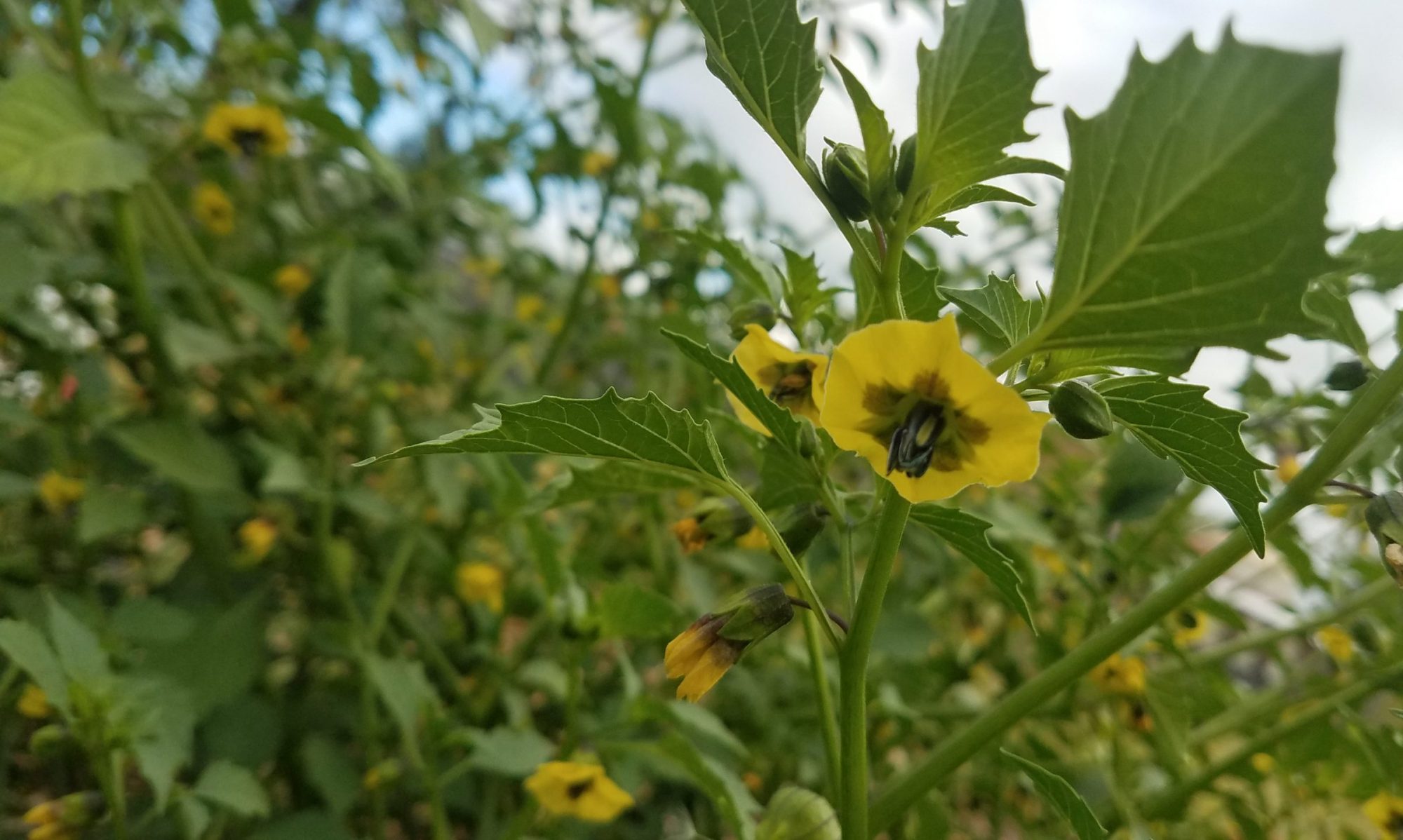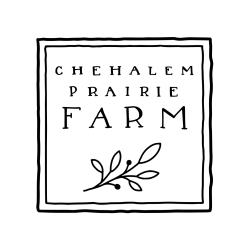This evening we planted tatsoi, muzuna, and orach in row 5, and little gem lettuce and cutting mix in row 6 (3×3 patches about 6 feet in from the east end). The seeds are so tiny, they remind me of having “faith as a grain of mustard seed.” It’s hard to believe that these ones will grow into food for the dinner table.
Grant transplanted lettuce, kale, and spinach.
The gravel came yesterday, we got it all spread, and the farm stand is now in place.
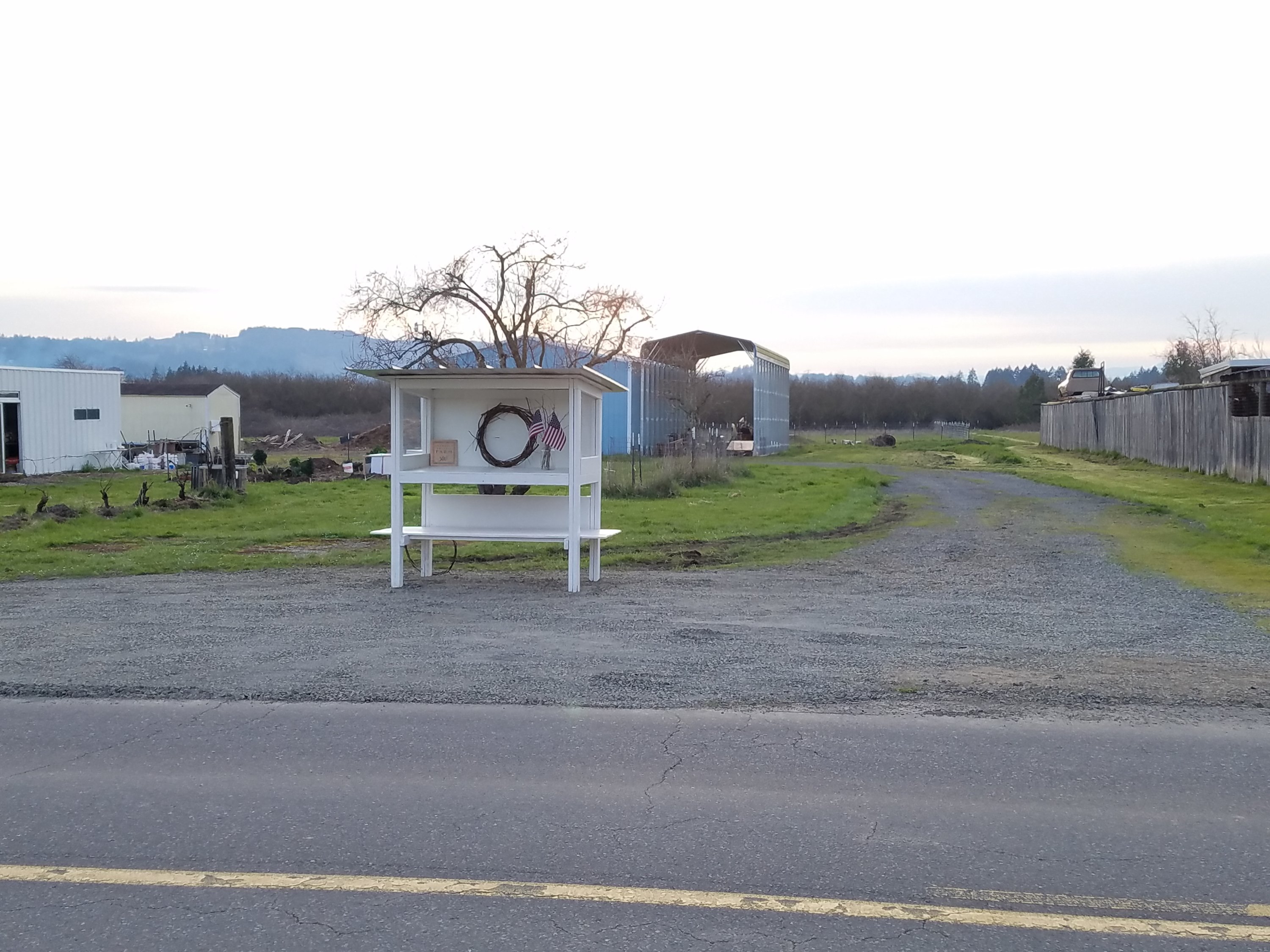
Today we put down the underlayment for the farm stand pullout area. Gravel is next.
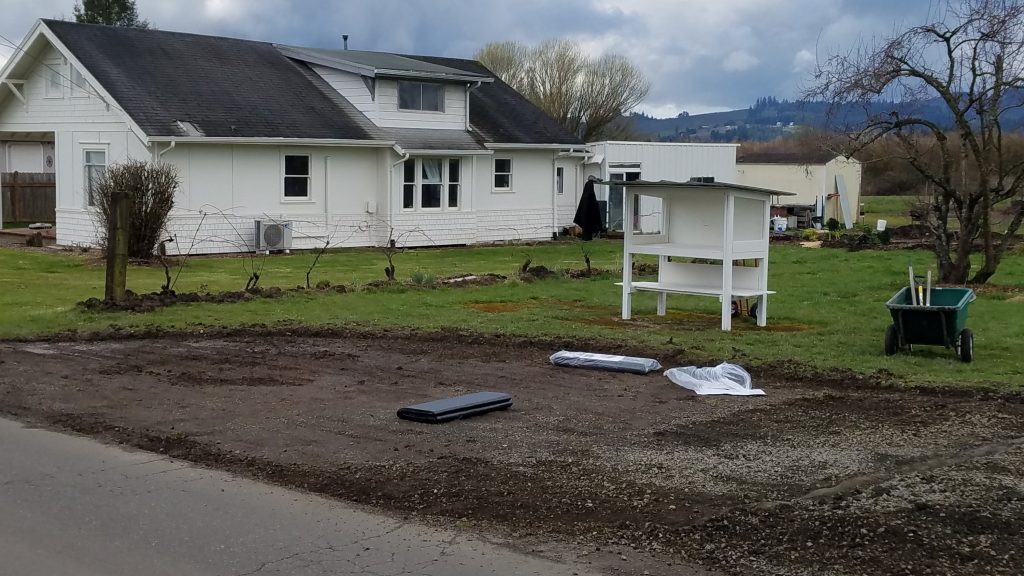
I did my first weld with our new welder: reattaching a bracket to the mower deck for the Craftsman.
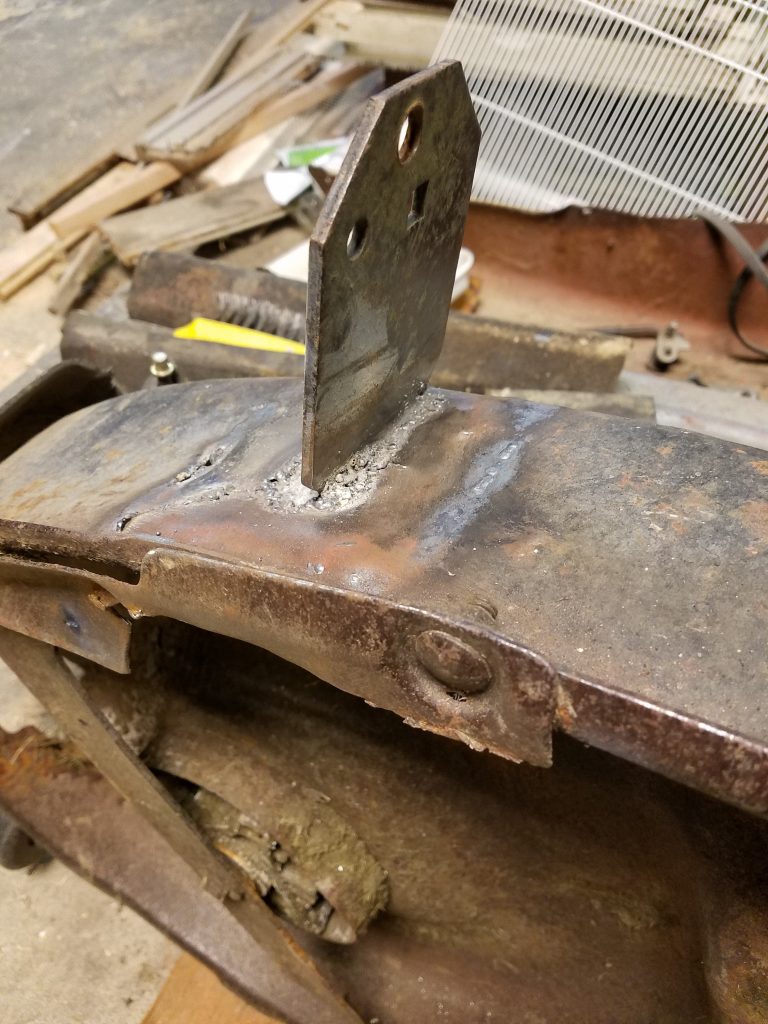
I also replaced an idler pulley that had seized up and made the tractor undrivable.
On the Case tractor, I’ve been drilling out lug bolts that sheared off from trying to remove the left real wheel.
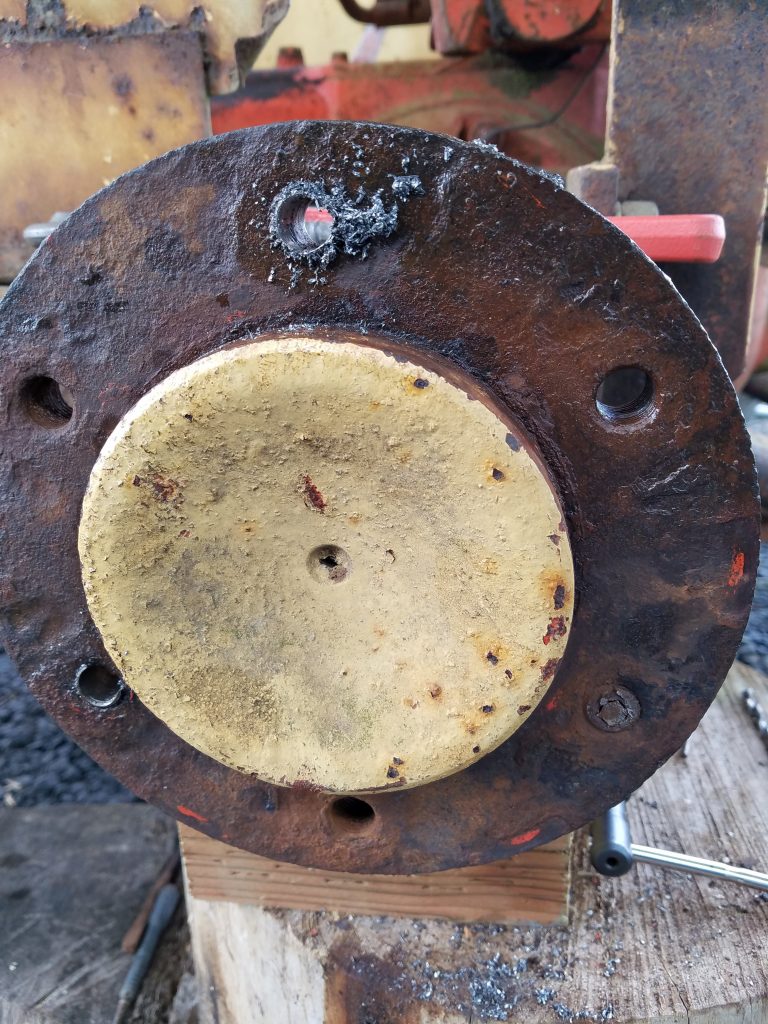
I also tried fixing up the hand throttle, but I can’t hammer or drill the pin out of the shaft, and I can’t get the shaft to turn
We applied about three yards of aged manure to the garden today. It’s still soggy out there, so we got the trailer stuck a couple times.
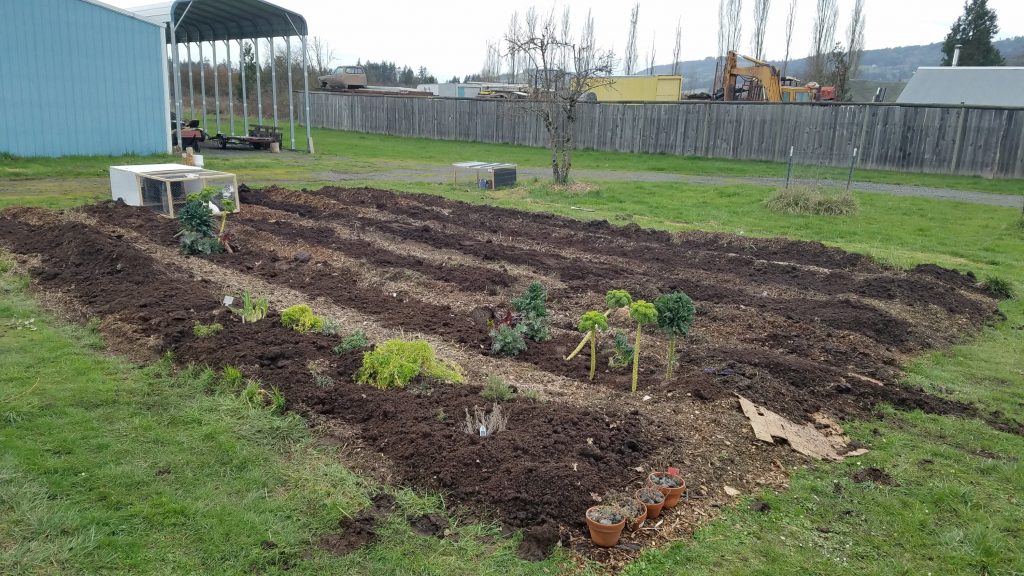
We’re still harvesting kale, but it looks like it’s going to start going to seed soon.
I gave a pear tree a light pruning and the grapes their usual heavy pruning.
I pruned the plum tree today. I removed suckers and headed back vigorous growth but didn’t remove any large stuff. I’m starting to develop some growth down low that will hopefully become productive someday.
Last year we didn’t get many plums. It could have been due to the aggressive pruning or the every-other-year tendency of fruit trees.

I read up some more on pruning. Winter (dormant) pruning spurs vigorous growth because the energy stored in the roots is concentrated into fewer branches when spring comes. Summer pruning slows growth because it reduces the amount of energy-producing leaves. So, I probably need to do less winter pruning and more summer pruning on the plum tree.
I spread more sulphur on the garden a couple weeks ago to lower the pH further. A couple days ago, I lightly pruned the young fruit trees. This weekend, an ice storm encased everything in up to an inch of ice. Our kale still looks like it will survive, though.
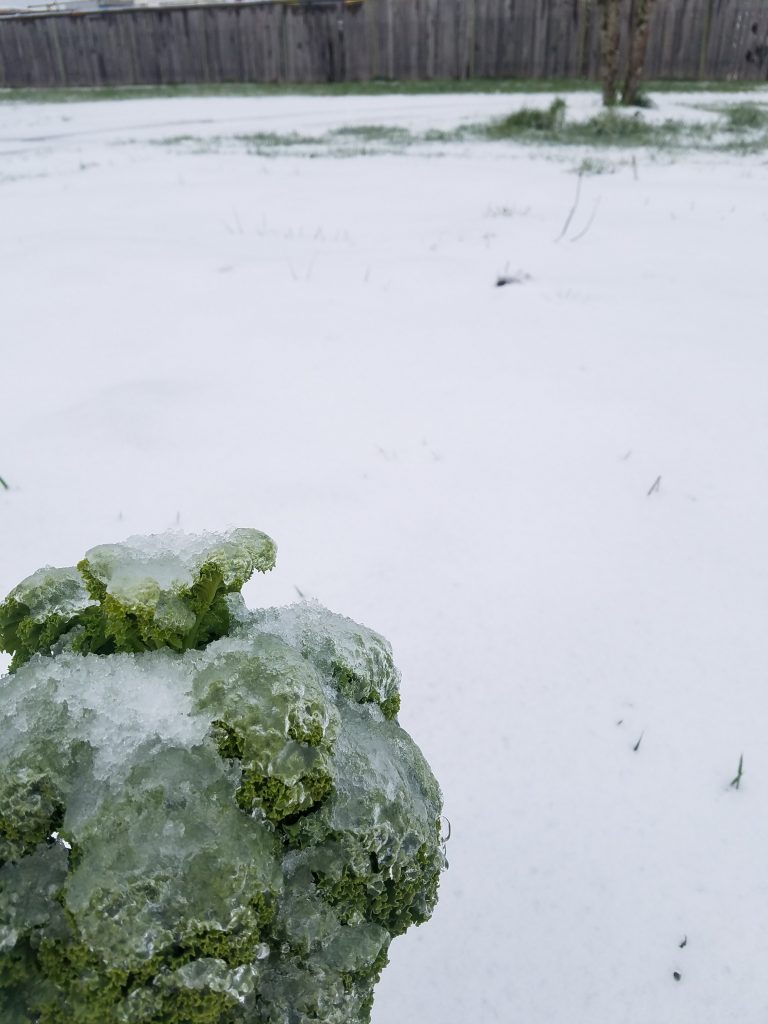
I found a duck to keep Hercules company and gave her to Grant for Christmas. He named her Maggie.
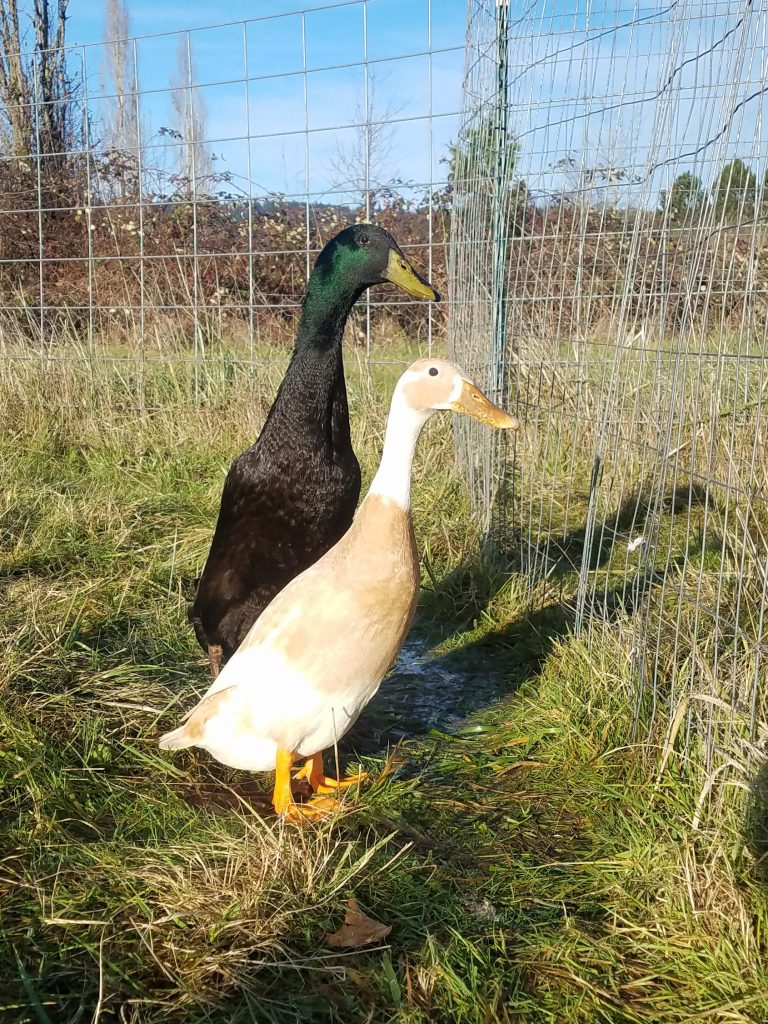
I sprayed copper fungicide on the peach, nectarine, and peach-plum trees a couple weeks ago and again today. I’m hoping it prevents peach leaf curl. This year, those trees all had to grow a second set of leaves after the first set curled up and died off.
Heather’s probably not going to post this, so I guess I will… Clover the sheep died on October 2. We don’t know why. She had no appetite for a couple months prior to death.
First frost.
We’ve been harvesting corn for about a week now. We probably could’ve started even a bit earlier.
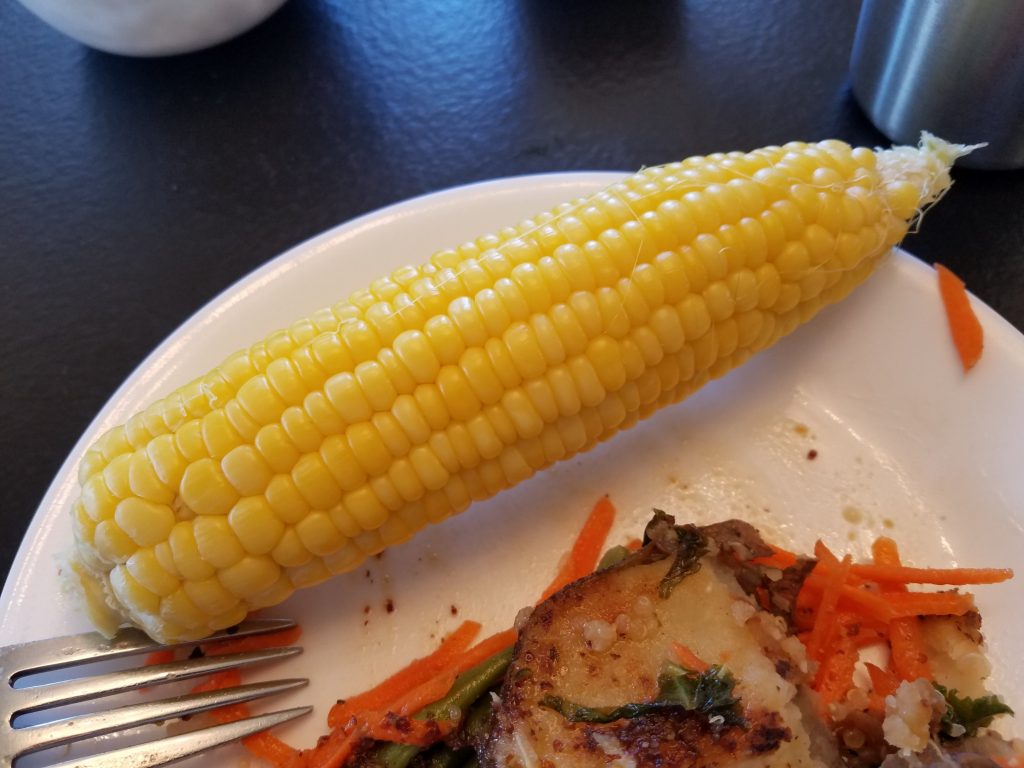
For the record, I like chard.
I transplanted six broccoli plants to take over as my pea plants die back. Heather transplanted a Vietnamese coriander plant.
I picked the first two gypsy peppers of the season.
I picked the first plum of the season. It will be a smaller crop this year, but that’s ok — we had way more than we needed last year!
We picked our first ounce of beans today. 😉 The beans that were barely alive are now looking quite healthy and should produce a good crop. The first cucumber and pepper should be ready this week. My peas are almost done for the season. They weren’t nearly as productive as last year but still provided some good table fare. The chard and kale continue to produce like gangbusters.

Our neighbors’ field was cut and bailed over the past week. They generously gave us some bales for our sheep.
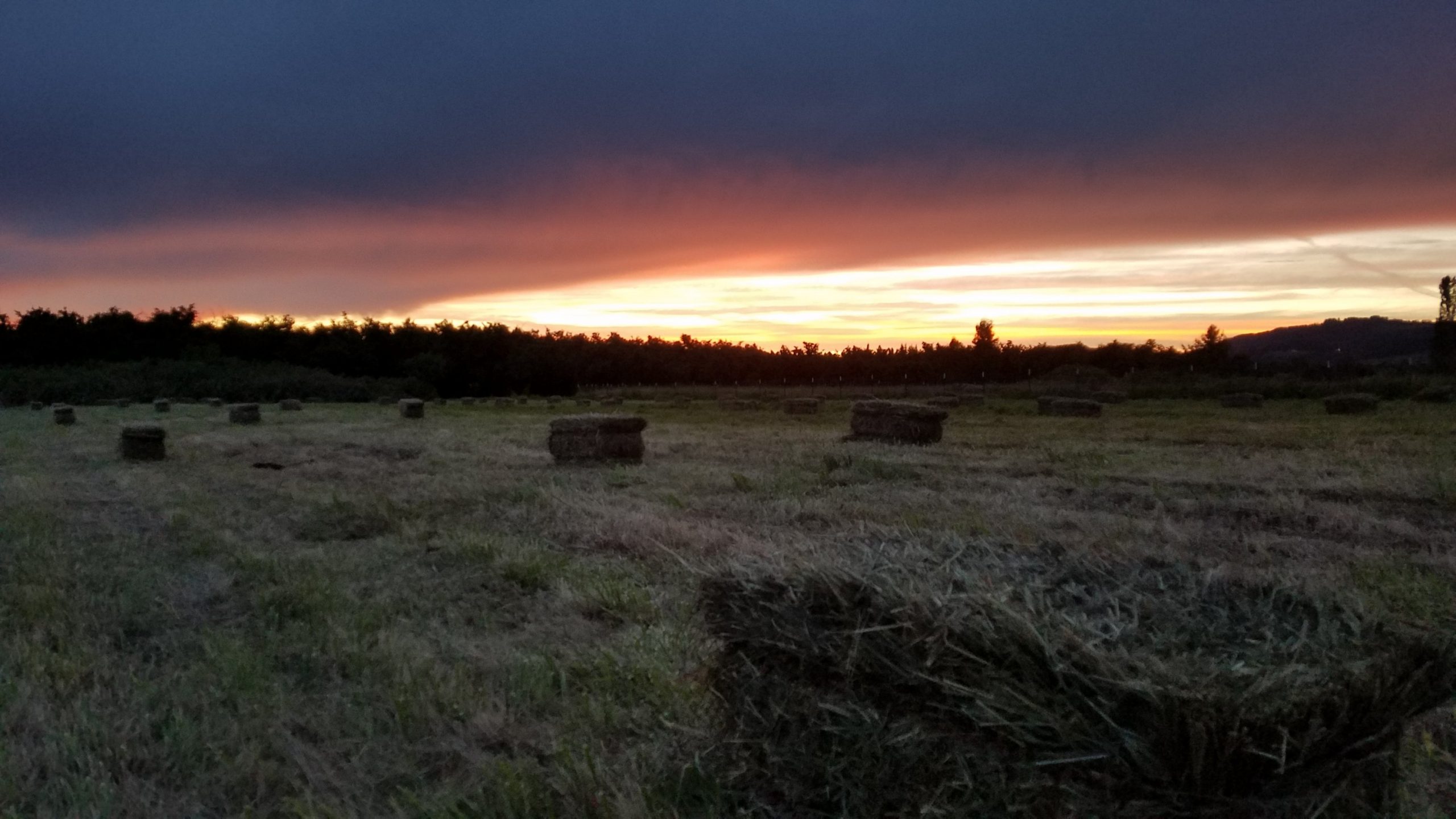
Our other neighbors have us three probably-fertilized turkey eggs, and one of our chickens is broody, so we’re letting her sit on them. It’ll be a couple more weeks before we find out if they hatch.
We transplanted a bell pepper plant and basil today. The pepper plant is larger than the one we transplanted way back in early May. I think we really need to be more patient with planting. Things that are planted too early languish and get ravished by bugs. Now that the soil has warmed up, things are finally taking off: corn, bean, beet, tomato, cucumber, and squash plants are all looking fairly healthy.
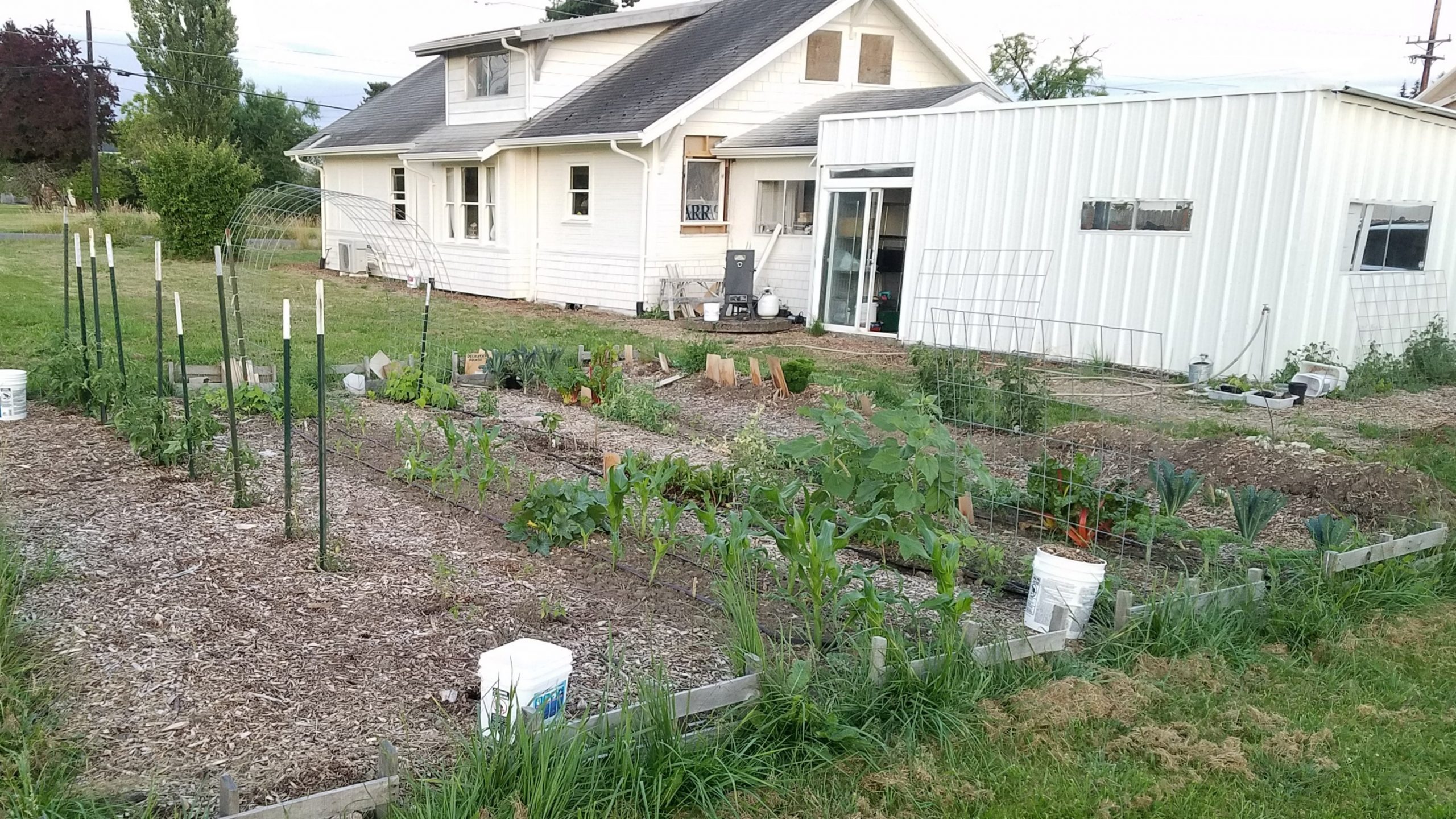
On the other hand, I wonder, if we fix the pH problem, will plants do better earlier in the season?
Lastly, today we transplanted an oak tree we got from our friends.
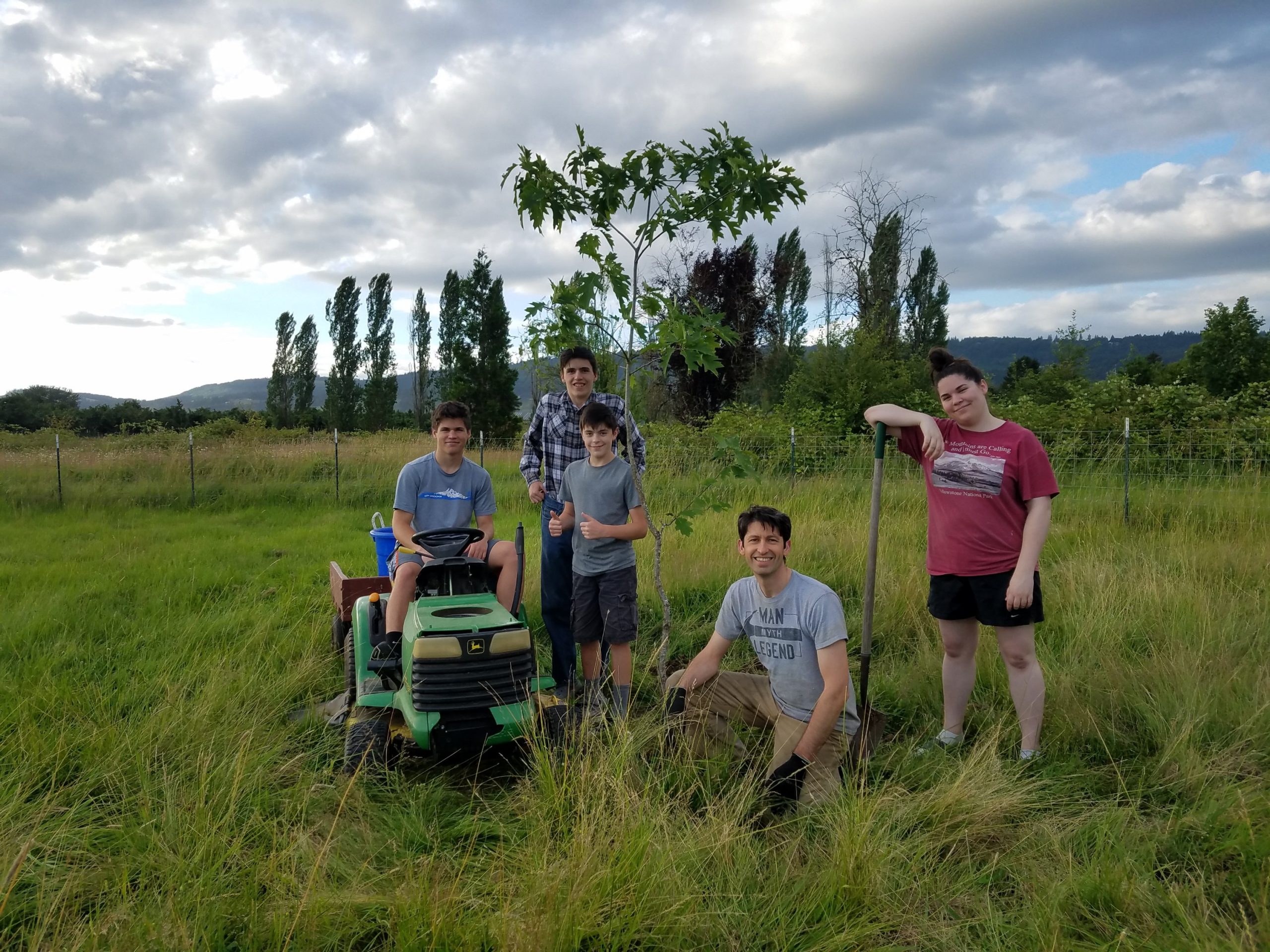
I seeded some carrots and spinach along the center of my row. The peas have been giving us a sparse harvest, and the beans are barely surviving, let alone growing. On the other hand, we’re harvesting plenty of chard and kale.
Our garden continues to languish while we see lots of things growing around us.
We did a red cabbage pH test yesterday, and I think we found a major problem.

From right to left, the first four are the rows of our garden from south to north. All rows are too alkaline, especially #2 and #3. Next is soil from north of the barn, where we plan to plant blueberries, cranberries, and raspberries next year. It’s also too alkaline, especially for blueberries. Next is the only good news in this test: our well water is pH neutral! After that is tap water, which is alkaline. Then distilled water, our pH neutral control.
We also bought an electronic soil pH tester yesterday. I can’t get any reliable results out of it.
We immediately went to the at store, bought 50 pounds of granular elemental sulfur, and spread about 10 pounds on the garden rows (including a little on rows 5 and 6). We’ll spread the rest in the future berry patch area later this summer.
Fortuitously, it rained last night and absolutely poured today, so that will help get the sulfur into the soil… but it will still take months for bacteria to concert it to sulfuric acid and lower the pH of the soil. In the meantime, Heather is experimenting with a watered down vinegar solution to see if it helps in the short term.
My replanting of beans is sprouting.
